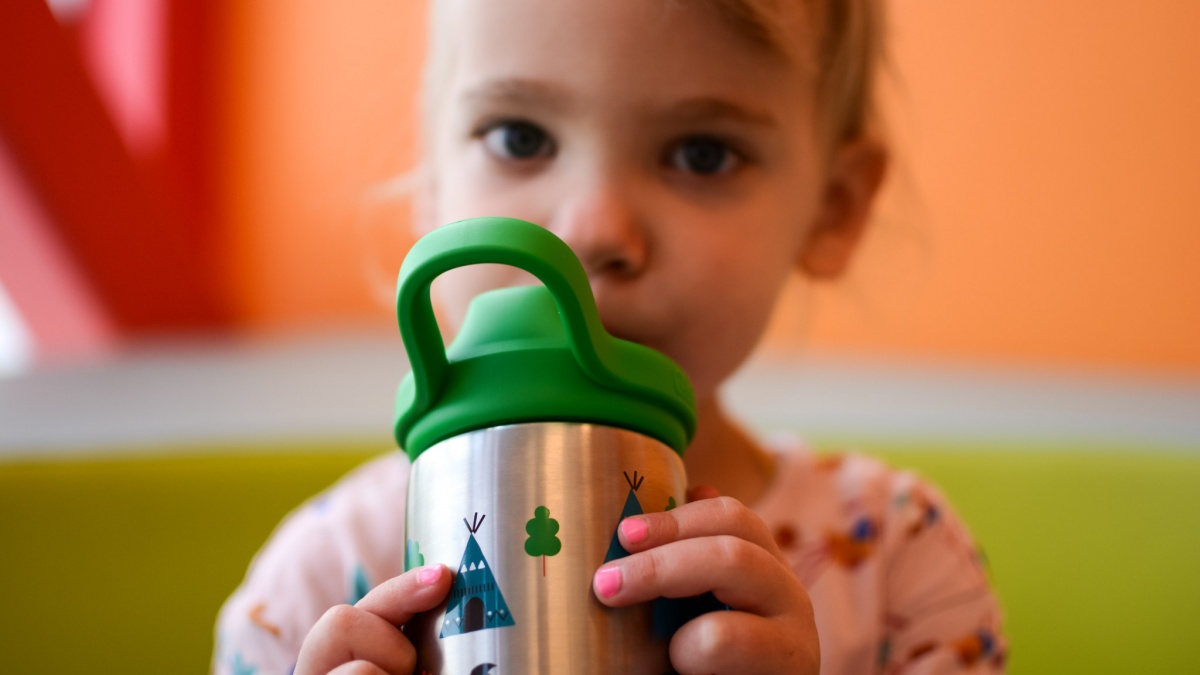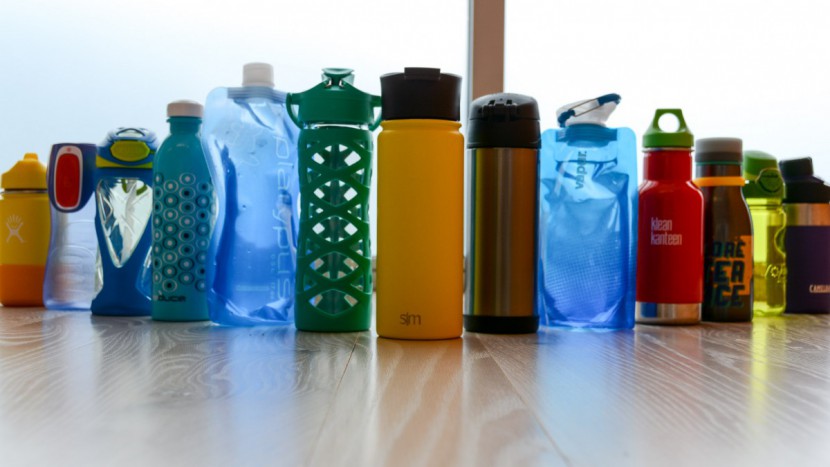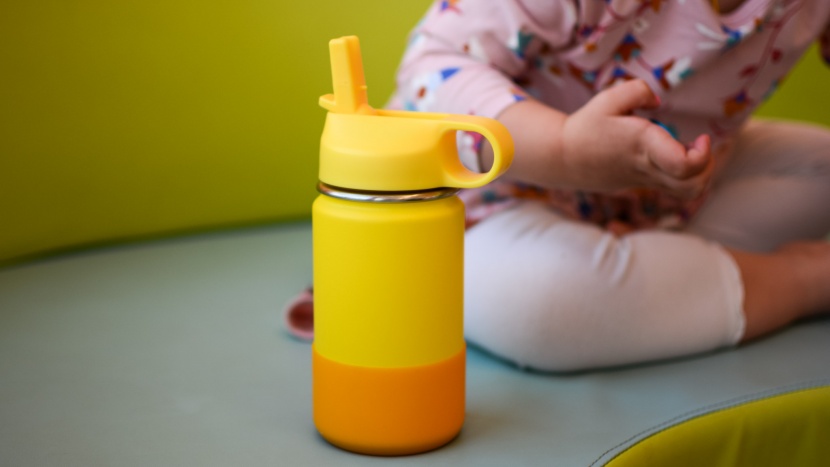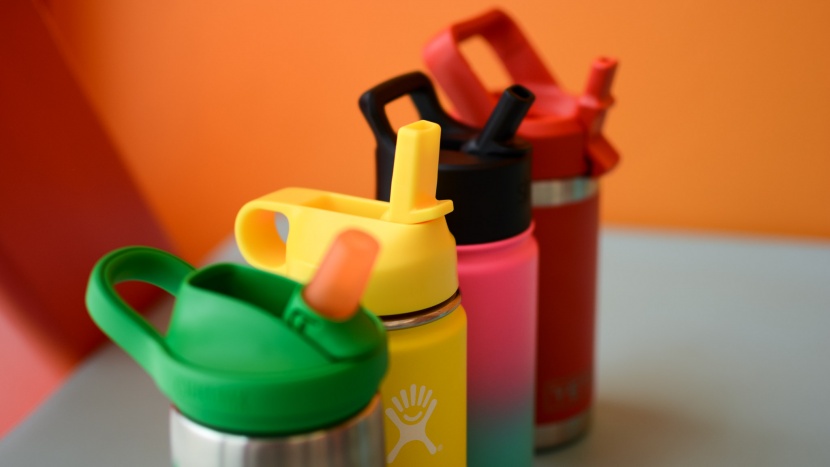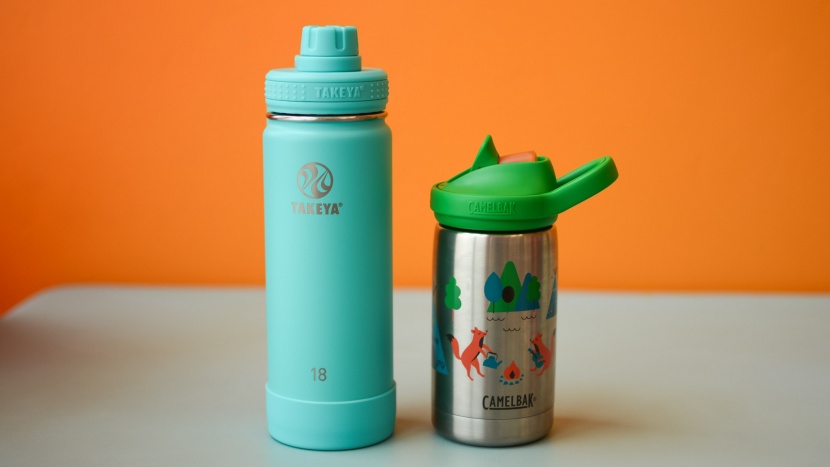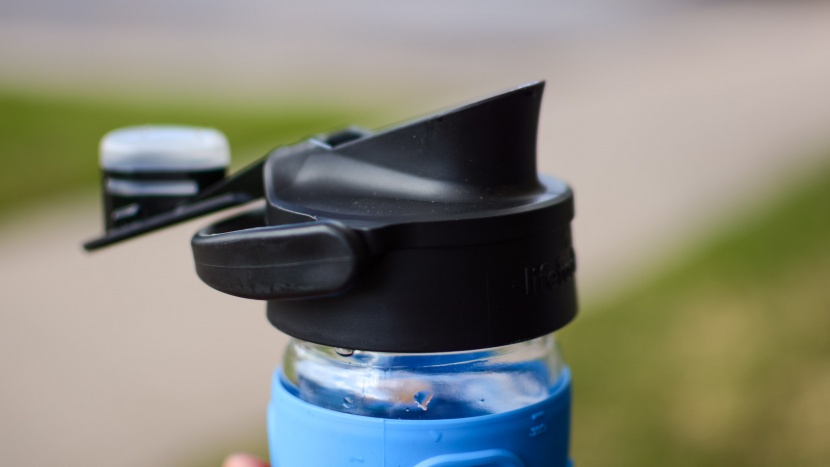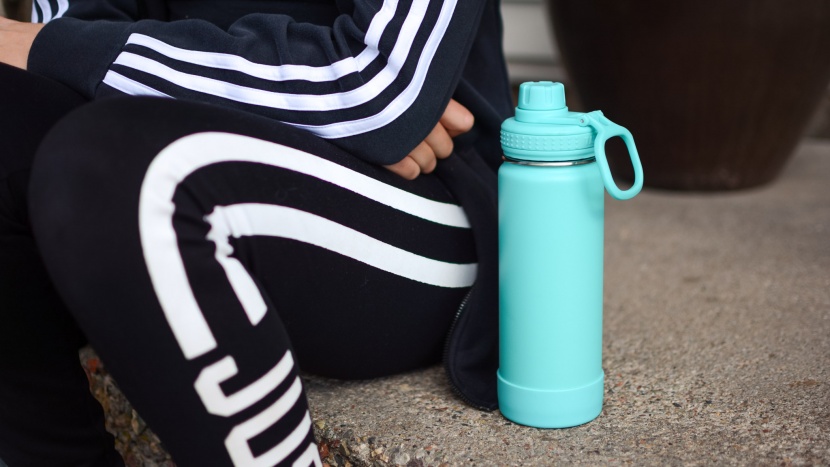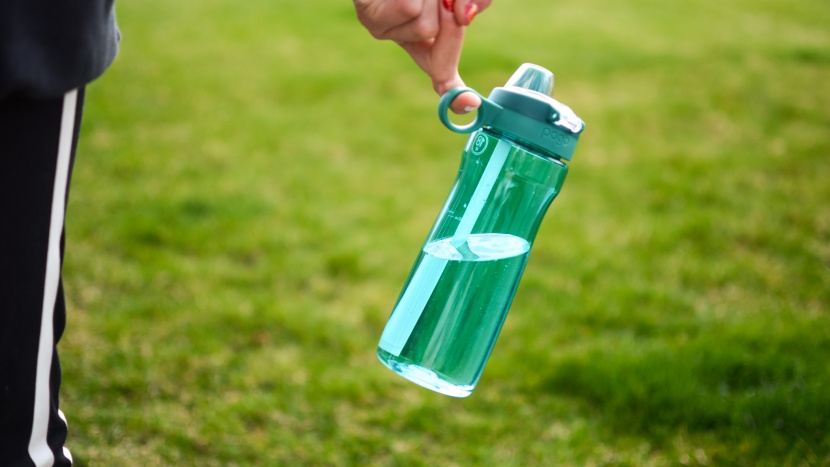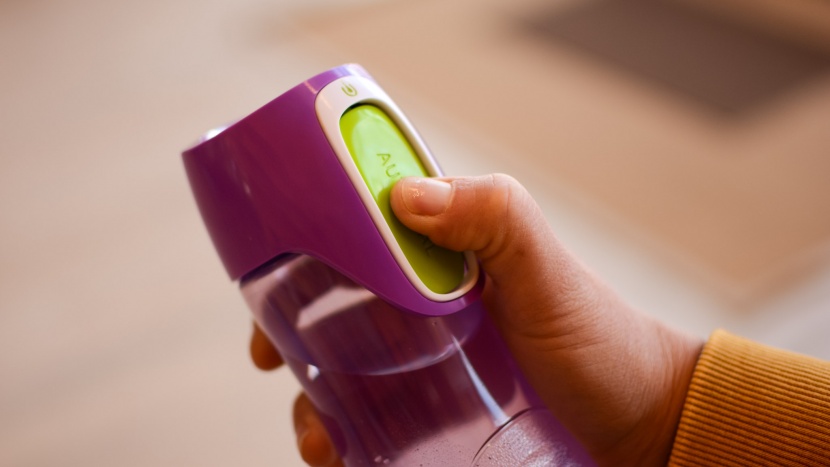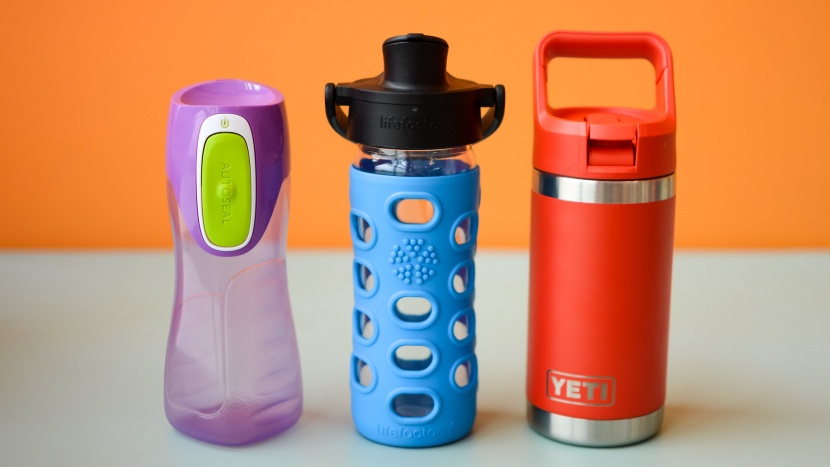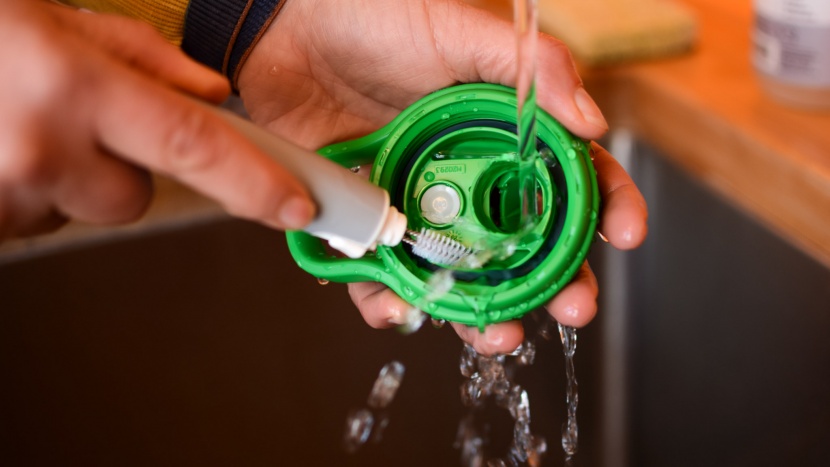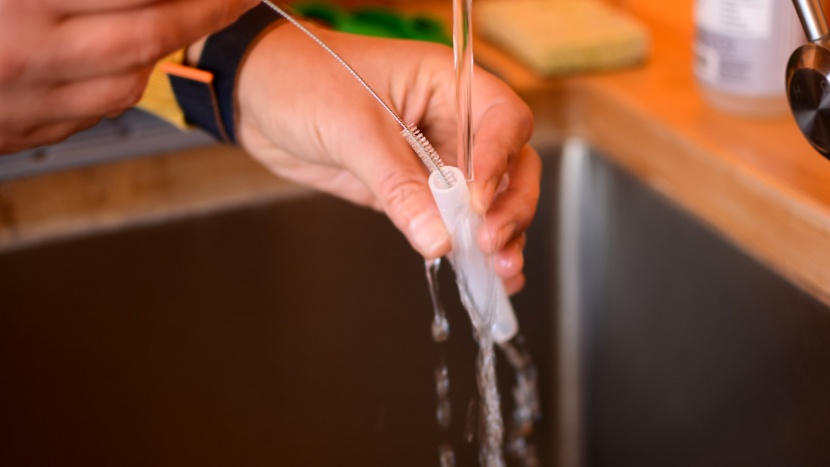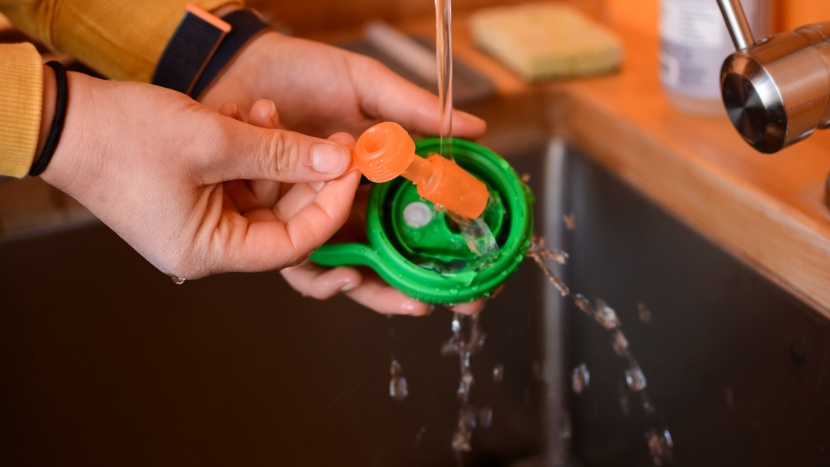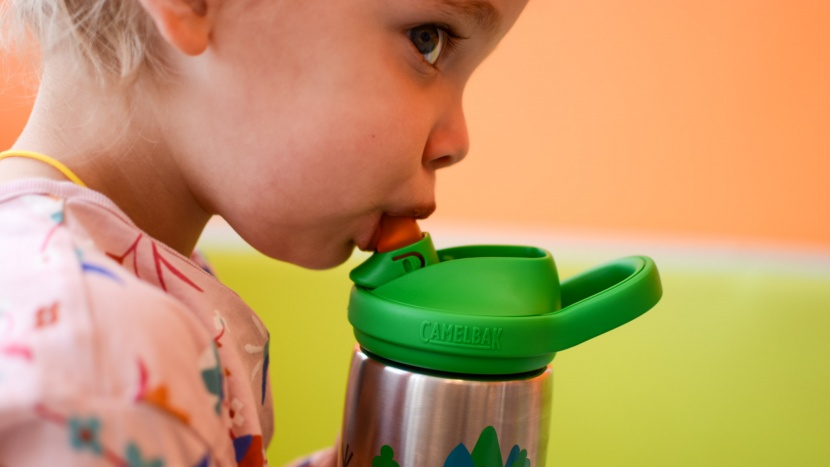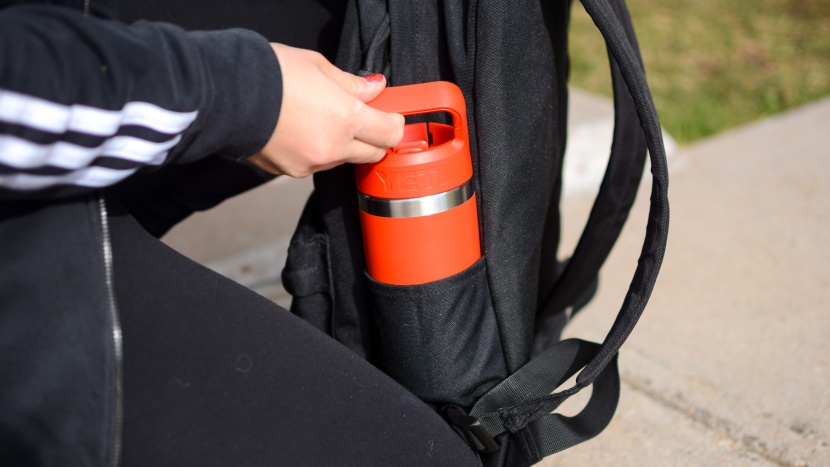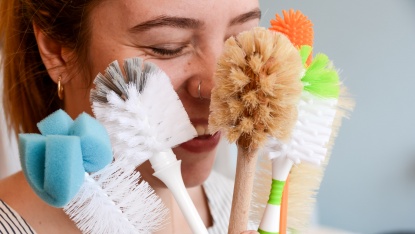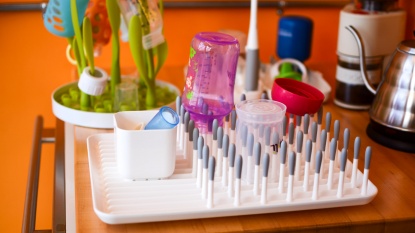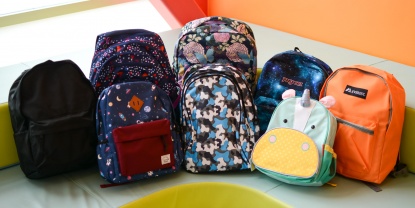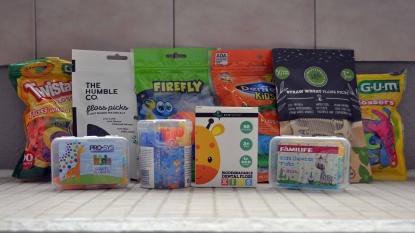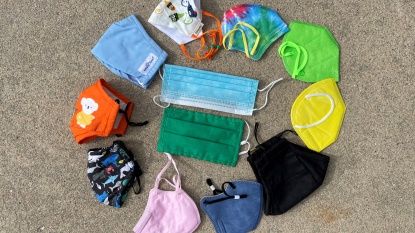You may find yourself curious and questioning: How is a kids' water bottle different from a sippy cup? Why might you need one? Why consider a leak-proof water bottle in the first place when a cup will do? Read on to learn more.
Water bottles are helpful for on-the-go hydration. Running from school to soccer practice can build up a thirst, and finding a water source while running about can be tricky. Alternatively, an easy-to-use and leak-proof water bottle can provide children with the freedom to move from place to place with a handy bottle. Many schools now request that little ones bring water bottles to class to prevent frequent trips to the water fountain and keep kids' brains working at peak levels. A water bottle for kids gives children the feeling of independence and encourages them to drink more water than they usually consume. This increased consumption helps children stay hydrated, which is a plus for the entire body. In our review, we will help you sort through the different types of bottles and their features, so you can decide which would work best for your family.
Why Get a Kids' Leak-Proof Bottle?
Kids' water bottles are typically for children three years of age and over. You may wonder why a child this old would need a leak-proof container.
Using a leak-proof bottle is an easy way to get water in your child while keeping up with their busy schedules. Sending your little one out for a day of adventure with a full water bottle can improve their mood, ability to play, and increase their level of hydration. With a bottle in hand, you don't need to worry about leaks, dehydration, or the need to find a water source while away from home.
Advantages
- Hydration — Continual access to water encourages children to stay hydrated for any adventure.
- Transportability — Bottles are easy to transport and carry because they don't leak and are relatively narrow for smaller spaces. Some options can even attach to a pack or belt.
- Convenience — Kids can drink whenever they want without looking for a water fountain, waiting to find a beverage, or making an expensive convenience store purchase.
Disadvantages
Although there are many advantages to using a leak-proof water bottle, you should also know some disadvantages.
- Potential Injury— Some bottles can have hard or stiff straw spouts that do not flex, and these designs can cause injuries if children fall with the spout in their mouth. While not as worrisome as a toddler learning to walk with a sippy cup in hand, it can still be a concern if children drink while in motion.
- Increased Risk of Dental Decay—Consuming sugary or carbohydrate-rich beverages can increase the risk of dental decay. Limiting water bottle use to water only will help decrease this concern.
Kid Bottle Design
Kids' water bottles hold more liquid than sippy cups and feature a leak-proof valve or a closeable lid. The body is usually insulated and sometimes slightly contoured for easier gripping. The containers typically come in various colors and patterns, and some have recognizable characters on the side, while others offer abstract designs. Some can even connect to a backpack or stroller with a clip. Several bottles have lids or folding spouts to reduce the dirt and debris that can accumulate on the spout.
Bottle Body
Kids' Water bottles are relatively tall, slim, and some fit into cup holders, as well as little hands, even those with larger capacities over 12 ounces. They do not take up a lot of room in backpacks, and even the insulated varieties are relatively light and easy to transport. Most options require a bottle brush to clean, and some need a straw brush to clean the straws or mouthpieces.
Materials
Many water bottles on the market are of various materials, such as glass, stainless steel, plastic, and sometimes include silicone parts. Some bottles are primarily plastic with silicone parts, while others are stainless steel or glass with plastic lids. When it comes to materials, stainless steel is a more eco-healthy option than plastic, and it is easier to clean. But the plastic bottles are lighter and less expensive. The material type can also impact how easy the bottles are to use and clean, and how long they will potentially last. Understanding each material's benefits and drawbacks is essential before deciding which type of bottle to buy.
We encourage you to read more about plastics in our article, Are Plastics Safe for Bottles and Sippy Cups?, to learn about the potential problems and concerns related to plastic use in bottles and cups for children. Issues concerning plastic in children's products are significant and worth reviewing before making a buying decision.
Glass
Children frequently refrain from using glass for obvious reasons (drops=breaks). However, glass contenders exist in the world of water bottles. We even tested one, the Lifefactory with Active Flip Cap. Glass is an inert substance that does not impart chemicals to its contents. It doesn't retain odors or colors from its contents, either. Unfortunately, it is breakable, which can be a problem when it tumbles around in a backpack or is tossed on the ground at a playground. While most glass bottles come with a silicone sleeve for protection from minor bumps and short drops, the sleeve does not provide 100% protection from breakage.
Stainless Steel
Food-grade stainless steel products are an excellent choice for active kids. Steel is durable, doesn't impart chemicals or odors into its contents, is easy to clean, and is often insulated. If you're not convinced yet, it is also earth-friendly, eco-healthy, and recyclable.
We prefer stainless steel over other materials that can potentially leach chemicals into their contents. Steel is exceptionally durable and doesn't break, so it also rivals glass options. Even though stainless steel is significantly heavier than plastic, and insulated steel weighs more, we believe the tradeoff is worth it, and most children over the age of three will be able to hold and carry an insulated bottle with ease.
Steel products offer everything in an economical package, durable enough to last for years. They are not only a healthier alternative to plastic but also eco-friendly and lasting. Klean Kanteen is one of the eco-friendliest bottles in our lineup, and its website has supportive information on the company's efforts to keep the Earth and your children healthy.
Plastics
Plastic is a common kid water bottle material as it is budget-friendly, lightweight, and user-friendly. Plus, they often feature cool designs and colors that are eye-catching for little kids and parents. Parents might consider plastic for budget reasons, while children like the graphics and licensed characters often found on plastic bottles. Unfortunately, plastics have potential eco-health concerns that you'll want to consider seriously before making your final bottle-buying decision.
Given the potential unhealthy properties of plastic, we feel it is essential that parents review the studies and history of this material. While BPA is no longer in use, that doesn't mean that plastic is always safe. Some studies indicate that many of the BPA-free plastics potentially leach chemicals into their contents; this means that some of the plastics in kids' water bottles may not be any safer than the BPA plastic they replaced.
A study from Environmental Health Perspectives states the following:
Another study published in Environmental Health found that some plastics still potentially leach estrogenic chemicals.
Before you toss away your plastic containers, take a deep breath. The jury is still out on whether or not all plastics are culprits. However, we believe that exposure to potentially harmful chemicals should be limited or eliminated whenever possible. The studies we reviewed left us feeling that more research is needed and that parents should proceed with caution. However, considering the results of the early study, we recommend stainless steel over plastic when possible.
While the debate over plastic safety continues, we think it is wise to eliminate plastic by selecting stainless steel options. Even if plastic's lower price is enticing, steel is a healthier choice that saves money over time thanks to its durability and longevity.
Silicone
The spouts, straws, sleeves, and valves of kids' water bottles are typically silicone. Most of the silicone is medical-grade, which is widely accepted as safer than plastic.
The use of silicone keeps parts flexible and decreases the potential for injury. In fairness to plastic, it is only fair to mention that some preliminary studies show that silicone can break down when heated and can release small particles over time. As a result, we encourage you to hand-wash silicone parts (or preferably all parts) to avoid breaking down the material.
Parts
Most of the bottles we reviewed have only a few parts and are easy to clean and assemble. A body, lid, and spout/straw are the typical components of a kids' water bottle, with most having three or fewer parts. Some bottles also include a leak-proof valve.
Spouts
There are two basic types of spouts: hard spouts and flexible straws. Some have a cup-like edge, while others are short or modified hard spouts.
Hard Spouts
Hard spouts are plastic and may or may not come with a silicone cover. They have little to no flexibility and can cause potential injury if children fall with spouts in their mouths. These hard spouts usually wear well over time and are often resistant to chewing and biting damage. While it is mouth-friendly, it is also stiff and unforgiving if a child falls with it in their mouth. If you have an aggressive chewer, a hard spout can be irresistible, but you should keep the dangers of this spout in mind when looking at potential bottles to buy and set some ground rules about not using the spouts when in motion.
Straws
Flexible straw spouts are less likely to cause injury than their hard spout counterparts and more closely align with the spout style preferred by the ADA. Straws help move the liquid to the back of the mouth, thereby skipping the teeth. As a result, it can potentially decrease the possibility of cavities, improve overall oral hygiene, and lead to less dental decay. The most significant disadvantage of straws is the time and energy required to clean them. Cleaning straws includes disassembly, a special brush, and reassembly. Another problem occurs when straws become dislodged from their lids, rendering the bottles somewhat useless without adult help. While not a deal-breaker, it can be frustrating for children who drink and get nothing but air.
Cup-like Edge
Some of the products we consider have a cup-like edge, which provides a cup-like experience and prevents possible injuries that can occur with harder spouts. Also, it avoids the hassle of straw cleaning and maintenance. The only drawback of some of these bottles is the coordination and finger strength it takes to hold down the button that opens the valve while you tip the bottle and drink. With practice, most children can manage the feat, while older children experience more success.
Valves
Valves are the components of leak-proof bottles that prevent leaks. While some valves are more challenging to use than others, none of them are impossible. Unfortunately, you don't know how well a valve works until after you buy it. Reviewing the valve materials or the kind of valve isn't a good indicator of whether it will be easy to use or even prevent leaks. While the best valves may have things in common, it wasn't until we bought the water bottles and used them that we were able to determine which were easy to use and which were a struggle.
The American Dental Association (ADA) recommends that parents choose bottles and cups without leak-proof valves and limit sugary liquids to help avoid dental decay. For more information, please see the ADA article. While choosing a bottle without a leak-proof valve is easier with older children, as most kids over three can close lids to avoid leaks, leak-proof valves are still helpful in kids' bottles.
Safety Considerations
Leak-proof bottles can be potentially hazardous. From 1991 to 2010, approximately 45,000 injuries related to leak-proof cups and bottles were presented to the ER.
Here are some best practices, according to the American Academy of Pediatrics (AAP) and the ADA:
- Bottles should only be used when stationary
- Help prevent dental decay by only filling bottles with water
- To avoid dentition deformation, limit water bottle use
- Provide a real cup whenever possible
While it is wise to remember the ADA guidelines, we believe leak-proof bottles provide a valuable service for kids on the go. Water bottles help keep children hydrated, a service unmatched by a regular cup. With features designed with travel and convenience in mind, these bottles have earned a place in busy children's lives. Using standard cups at home, perhaps during mealtimes or water breaks, can offset some potential concerns with kids' water bottles.
How to Choose the Best Kid's Water Bottle
Selecting the right water bottle doesn't need to be challenging. If you follow some basic tips, you'll be able to narrow down the options based on key considerations.
First, Choose a Body Material
Before choosing a water bottle, consider the many material options, as each type has pros and cons. Material is an important decision, especially considering the potential health concerns of plastics and the benefits of insulation. Also, favoring one material over another can quickly eliminate competitors and narrow down the possibilities.
Without a doubt, our favorite kids' water bottles are stainless steel, as this material holds the most benefits. Not only is steel eco-friendly and healthy for humans, but it also does not leach chemicals or impart flavor. It is easy to clean, recyclable, and exceptionally durable, providing years of service to quench your child's thirst. Indeed, it will be around for a while. Plus, finding a stainless steel water bottle with insulation is not a difficult feat. While stainless steel is often more expensive and heftier than plastic, we think the extra expense and heft are minor given the health and environmental benefits, along with the durability and longevity.
Next, Pick a Spout
The second most important consideration is the water bottle's spout. Considering the injury potential and the ADA concerns related to hard spouts, we prefer a softer straw spout or a cup-like edge when possible. We also think kids' water bottles with a flexible straw spout are easier to use than many hard spouts. Lids that screw off can be challenging for younger users, but it helps that most options in our review have caps connected to the bottles, which decreases the chance of a lost lid. If your chosen spout is harder or of potential concern, we suggest encouraging your little ones to drink while staying still or, better yet, while sitting to avoid possible injuries.
Last, Choose Insulated or Non-Insulated
Water bottles with insulation have more potential than their non-insulated counterparts. Having cold water during soccer practice might be the ticket to feeling energized and refreshed. Plus, even if insulation isn't desired, it usually isn't a hindrance. The only downside of insulation is the extra weight, which is unlikely to cause difficulties for older kids but can be troublesome for younger children.
Conclusion
Since the market is flooded with kids' water bottles, selecting a top-performer can be challenging, leaving you reconsidering whether you really need one. Thankfully, our buying advice can help you identify key characteristics that may matter to you and your lifestyle and, thus, narrow down the options to the best products for your little ones.

